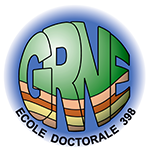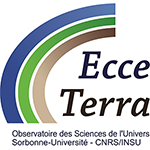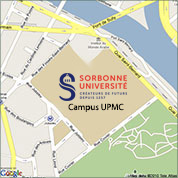Séminaire ISTeP - Jean-Paul Callot

(Université de Pau et des Pays de l'Adour)
Salt tectonics in mountain belts: don’t miss it, everything is plausible…
Evaporites levels have long been considered to have a major impact on the evolution of tectonically-driven as well as gravity-driven fold-and-thrust belts. If initially thin and planar, the role of pre-tectonic salt can be limited to an efficient décollement level during the convergence. Nevertheless, as a décollement level, pre-kinematic salt rock also deeply modifies the shape of the orogenic wedge, favoring large and low taper prisms. In addition, a thick pre-kinematic evaporite level, triggering salt tectonics from the time of the deposition on, modifies the architecture of the sedimentary packages and subordinate basins later incorporated within the orogenic wedge, creating structurally deceiving inherited geometries. Syn-orogenic salt levels also controls the fold-and-thrust belt development, favouring large scale decoupling and strain partitioning. At a much larger scale, it appears that salt levels influence also the development of the orogenic prism itself, modifying the topographical evolution of the taper. Examples from the Western Alps, the Pyrenees and the Sivas basin illustrate the various roles of salt, generating strong inheritance at almost all scales of observation. In addition, two dimensional numerical experiments of collision built from the inversion of rifted margins reveal that mechanically, a weak décollement layer formed by salt rocks delays the formation of the collisional orogen. The thicker the salt layer, the wider and lower the altitude of the mountain belt, leading to a quasi-absence of topography and widespread salt tectonics, which obliterates classical thrusts propagation
vendredi 3 décembre à 12h30
Ce séminaire se tiendra également en visio via le lien suivant :
https://us02web.zoom.us/j/82205206183?pwd=Tkl4SFdaaGNrZnJtbEc4Y05yTlJqQT09
ID de réunion : 822 0520 6183
Code secret : PZbh5g
Egalement dans la rubrique
- Séminaire ISTeP - Carole Berthod
- Séminaire ISTeP - Razvan Poppa
- Webinaire ISTeP - Yann Klinger
- Webinaire ISTeP - Sylvain Garel
- Webinaire ISTeP - Vincent Roche
- Webinaire ISTeP - Cécile Arenes
- Webinaire ISTeP - Jorge Jara
- Séminaire ISTeP - Samuel Angiboust
- Séminaire ISTeP - Sarah Incel
- Séminaire ISTeP - Romain Rubi
- Séminaire ISTeP - Sabine Den Hartog
- Séminaire ISTeP - Thibault Cavailhes
Chiffres clés
L'ISTeP comprend 108 membres dont :
- 12 professeurs
- 21 maîtres de conférences
- 2 directeurs de recherche CNRS
- 2 chargés de recherche CNRS
- 7 ATER et post-docs
- 26 doctorants
- 21 ITA-IATSS
- 17 collaborateurs bénévoles / émérites





